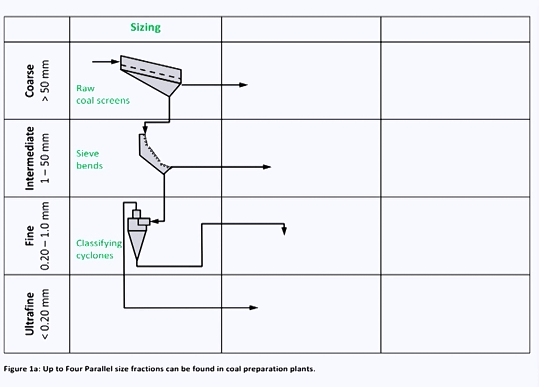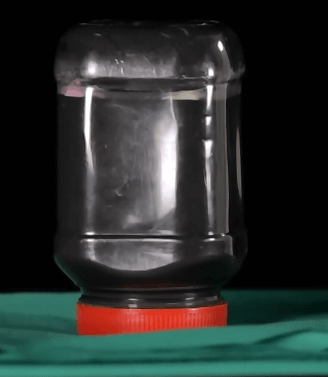So far in this module we’ve looked at how coal or minerals are found and how they are mined. In this topic we will look at the next step in the process that is upgrading the mining material to increase the concentration of the value of the component, before it is then transported to the customer. The process of upgrading the concentration of the valuable product in the mining material is variously describes as:
Beneficiation, Washing, Cleaning, Preparation, Processing
In this we focus on the beneficiation of coal, in the next topic we will look at the processing of metallic ferrous ores. The purpose or beneficiation of coal is to reduce the concentration of unwanted material or gangue which in the coal industry is referred to as mineral matter or ash. This is so as to reduce transport cost, why pay freight cost or worthless rock, and increase the calorific value. The run of mind themed with coal preparation plan consist of many lumps of pure coal, some lumps of pure mineral matter or gangue and some composite or so called midland particles which consisted of some coal and bands of mineral matter. Because most coal breaks up readily during mining, it requires only minor crushing to break it down to a manageable size for handling, with the top size of around 5 to10 cm. hence coal plates don’t require multiple stages of crushing and grinding to grind the coal down to fine powder, as is done with most mineral processing. Instead whole plants screen and classify the run of mine fill into a series of size fractions referred to as course, small, fine, and ultra-fine.
This series of figures shows that they are many different steps in the processes that follow first each of the size fractions is treated in parallel using cleaning methods that work best for that particular size fraction. Large and small fractions can be beneficiating using dense medium processes. The fine size is treated in various ways, including spirals and reflex classifiers. The ultra-fine fraction is very sufficient valuable material to justify processing is usually treated using floatation. We will talk more about dense medium processes in a moment and flotation in the next topic. Afterwards the product need to be de-watered before shipping to the customer. The tailings or reject solids also need to be de-watered before they too are disposed of.
The water recovered in the de-watering step is reused wherever possible. Coal and gangue minerals can only be separated on the basis of some difference in their basic physical properties such as, their color, their density, or their surface chemistry. In optical or x-ray separation techniques – the effect that coal is black, and that most of the gangue rocks are black colored is used as the discriminating characteristic. When stream of particles is passed along and scanned using x-ray or optical light, and the color differences detected, the lighter color gangue particles can be blasted from the stream using a directed jet of air. Density or gravity based separation techniques utilize the fact that coal has a density of about I .2 times that of water that the common gangue rock minerals have a density of between 2.4 and 2.6 times that of water. And so this difference in density can be used through gravity separation techniques.
Floatation is the technique that uses differences in the particles surface chemistry. It works particularly well on the ultra-fine fraction of coal, but we’ll talk about this in the next topic with metalliferous ores. There are a wide variety of industrial processes that seek to separate particles on the basis of differences in their density .For two particles in the same size a particle with higher density will settle faster than a particle with lower density. Another way to separate coal form its gangue minerals is to use dense medium separation, the principle of dense medium separation relies on the fact that coal particles have a density of a realm 1.2 times that of water, but the gangue that it’s associative with has a density of around 2.6 times that of water. So what that means is if we can find a fluid of with a density somewhere between 1.2 and 2.6 times that of water and If we can then suspend coal and gangue particles in that fluid the coal particles at 1.2 times the volume of water will flow to the surface and the gangue particles at 2.6 times that of water will sink to the bottom. Such fluids exists but they are expensive, mining industries come up with a novel way of creating the fluid of the required density by implying a suspension of fine magnetic type particles in water. The jar beside me contains a layer of fine magnetic type particles around 100 microbes in size sitting at the bottom of a layer of water.
If you look inside the jar you will actually see that they are two dice sitting on the surface of the magnitude .these two dice in fact have a density about the same as coal about 1.2 times that of water which is why they sunk to the bottom of the layer of water. Why they use dice well I can put two particles of coal in there, but because coal particles are black they will be very hard to see amongst the black magnetic type. So let’s imagine for this experiment that the dice are particles of coal, so if I take the jar and shake it up to form a suspension with define magnetic type particles the suspension will have a density of about 1.6 times that of water. That means the dice or the coal have a density of 1.2 times that of water will float on the top and any gangue minerals with a density of 2.6 times that of water would sink to the bottom.
Let’s give the jar a shake and see what happens, now we can see the dice sitting at the surface of the magnetic type suspension. In this topic I introduced you to the purpose and philosophy of coal beneficiation they are many more clever and complex processes to separate coal from its gangue and probably the most important of those is that of flotation but we will talk about that in the next topic, when we look at the way we separate metal ores from may gangue.
